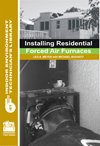With poor air quality remaining a major public health problem in many cities, the World Health Organization (WHO) has issued a new report1 aiming to encourage countries to take more actions that will reduce the negative impact of air pollution.
In the report, WHO refers to its updated urban air quality database covering 3,000 cities in 103 countries. Based on information from the database, WHO has established that more than 80 percent of the people living in urban areas that monitor air pollution are exposed to air quality levels that exceed WHO’s limits. This air pollution, consisting of high concentrations of small and fine particulate matter, is the greatest environmental risk to health today, causing several million premature deaths worldwide every year, WHO states.
PM1 IS MOST HARMFUL
Particulate matter (PM) in ambient air pollution ranges from coarse particles that are visible to the naked eye, such as dust and sand, to PM10, 10 micrometers or less in size (10 μm2); PM2.5 (less than 2.5 μm) and PM1 (less than 1 μm). Examples of PM2.5 are pollen and spores, while PM1 in urban pollution is predominantly composed of combustion particles.
WHO, the European Union (EU), and many national environmental protection agencies are monitoring PM2.5 and PM10 today, but to provide a truly healthy and productive indoor air environment in areas with bad air pollution, ventilation systems need filters that also remove a significant amount of PM1— the smallest and most harmful fraction.
When inhaled, PM1 particles are the most dangerous because they travel to the deepest area of the lungs, where a significant number of them passes through the cell membranes of the alveoli, enter the bloodstream, damage the inner walls of arteries, penetrate tissue in the cardiovascular system, and potentially spread to major organs, including the brain, heart, liver, and the endocrine system.
At worst, PM1 can contribute to deadly diseases like heart attacks, lung cancer, dementia, emphysema, edema, and other serious disease, leading to premature death.
PROTECTING URBAN DWELLERS
While sources of urban outdoor air pollution are well beyond the control of individuals, effective air filters in the ventilation systems of buildings can help prevent this particulate matter from penetrating indoor spaces, where people can spend up to 90 percent of their lives.
Quality filters remove these particles and other substances that can combine with those already present inside buildings and become more aggressive and harmful, making indoor air pollution many more times as hazardous as the outdoor variety.
In Camfil’s view, the health threats of the most harmful particulate matter, PM1, logically call for the use of filters with higher particle removal efficiencies in the air handling units of ventilation systems. This is especially important in cities with heavy vehicle traffic because PM1 particles originate mostly in exhaust gases from cars and trucks burning diesel fuel. WHO has classified these combustion particles as carcinogenic since 2012.
A recently released study3 in Stockholm has also proved that filters of higher efficiencies are capable of removing polycyclic aromatic hydrocarbons (PAHs) and other genotoxic compounds in polluted city air. PAHs are well known for their mutagenicity — their capacity to cause mutations and damage DNA — and their carcinogenicity — their ability to cause cancer.
With filters significantly influencing indoor air quality (IAQ), it will therefore be increasingly important for building owners to choose the right filter and efficiency for the targeted particulate matter, also taking into account the requirements of national and local authorities for higher IAQ and energy efficiency.
ENERGY-EFFICIENT FILTERS FOR PM1 REMOVAL
Current F7 filters have varying efficiencies to capture PM1 (typically 50-75 percent). These filters stop a significant proportion of these harmful outdoor particles before they are spread through the ventilation system. With their long life, low pressure drop, and low energy consumption, these products also give building owners the lowest total cost of ownership for their air filtration system.
This means that in cities with harmful air pollution levels, such as Los Angeles, London, Paris, Beijing, and New Delhi, it is possible to improve the quality of poor indoor air until it reaches an acceptable level, using the ventilation system alone with the right filters.
If a portable air purifier is also installed in rooms as an extra measure, a consistently high level of air quality can be achieved, even if the amount of particulates and other substances in the outdoor air varies significantly. These air purifiers are being increasingly used in offices and retail stores along city streets.
For further information about the importance of high indoor air quality and the health impacts of PM1, visit www.camfil.com/Filter-technology/Indoor-Air-Quality-IAQ.
Reprinted with permission from the Camfil website, www.camfil.com.
Publication date: 8/22/2016 1 Released May 12, 2016: www.who.int/mediacentre/news/releases/2016/air-pollution-rising/en/
2 μm = one millionth of a meter
3 “Removal of polycyclic aromatic hydrocarbons and genotoxic compounds in urban air using air filter materials for mechanical ventilation in buildings,” published in ASHRAE’s research publication Science and Technology for the Built Environment, February 2016.










